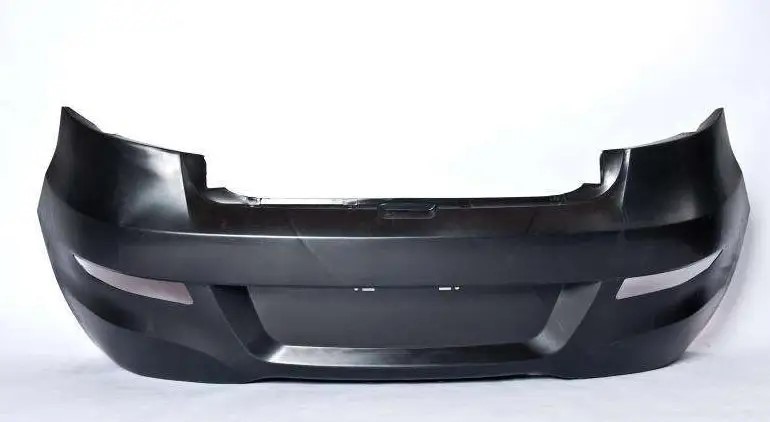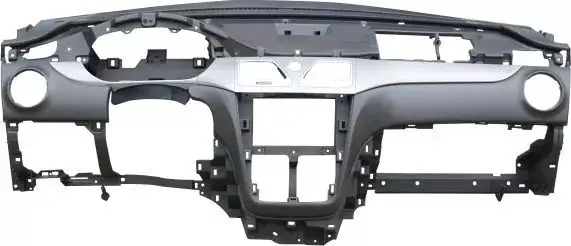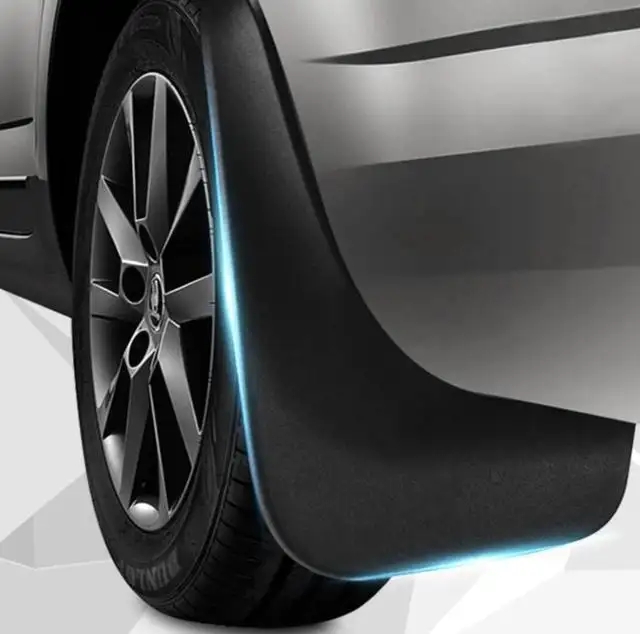In recent years, replacing steel with plastic has become an inevitable means of lightweighting automobiles. For example, large parts such as fuel tank caps and front and rear bumpers made of metal in the past are now instead of plastic. Among them, automotive plastic in developed countries have accounted for 7%-8% of the total plastic consumption, and it is expected to reach 10%-11% in the near future.
Typical representatives of thin-walled auto parts:
1.Bumper
Modern car bumper shells are mostly made of plastic or fiberglass. In order to reduce the trial production and the mold production cost, and at the same time shorten the trial production cycle, the FRP glass fiber reinforced epoxy resin hand lay-up process is considered during the trial production of the concept car.
The material of the bumper is generally PP+EPEM+T20, or PP+EPDM+T15. EPDM+EPP is also more commonly used. ABS is rarely used, which is more expensive than PP. The commonly used thickness of bumper is 2.5-3.5mm.
2.Dashboard
Car dashboard assembly is an important part of car interior parts. In that parts, the dashboard is a component that integrates safety, comfort, and decoration. Car dashboards are generally divided into hard and soft types. With the installation of airbags, the soft instrument panel has lost its safety requirements for people. Therefore, as long as the appearance quality is guaranteed, it is completely feasible to use a low-cost hard instrument panel. The instrument panel assembly is mainly composed of upper and lower instrument panel body, defrosting air duct, air outlet, combination instrument cover, storage box, glove box, central control panel, ashtray and other parts.
3.Door panels
Car door guards are generally divided into hard and soft types. From the product design, they are divided into two types: integral type and split type. Rigid door guards are usually injection-molded. Soft door guards are usually composed of epidermis (knitted fabric, leather or genuine leather), foam layer and skeleton. The process of the skin can be positive mold vacuum forming or manual wrapping. For medium and high-end cars with high appearance requirements such as skin texture and rounded corners, slush molding or female mold vacuum forming is usually used.
4.Fenders
The sheet metal around the wheels of the car is usually designed with plastic fenders to protect the sheet metal in order to prevent the sediment and water from scouring the sheet metal when the vehicle is driving. Injection molding of automobile fenders has always been a thorny problem, especially for large thin-walled plastic parts. During the injection molding process, it is easy to cause high pressure, serious flash, poor filling, obvious weld lines and other difficult to solve injection molding problems. The series of problems directly affect the economy of automobile fender production and the service life of molds.
5.Side skirts
When a car crashes, it protects human body and reduces the accident rate. At the same time, it must have good decorative performance, good touch feeling. And the design should be ergonomic and people-oriented. In order to meet these performances, the back door guard assembly of the car is made of plastic, which is widely used in the interior and exterior of automobiles due to its advantages of light weight, good decorative performance and easy molding, and at the same time provides an effective guarantee for the lightweight design of automobiles. The wall thickness of the back door is usually 2.5-3mm.
Overall, the automotive industry will be the fastest growing area of plastic consumption. The rapid development of the amount of automotive plastics will inevitably speed up the process of automotive lightweighting, and also promote the rapid development of the automotive injection mold industry.
Post time: Jun-01-2022





